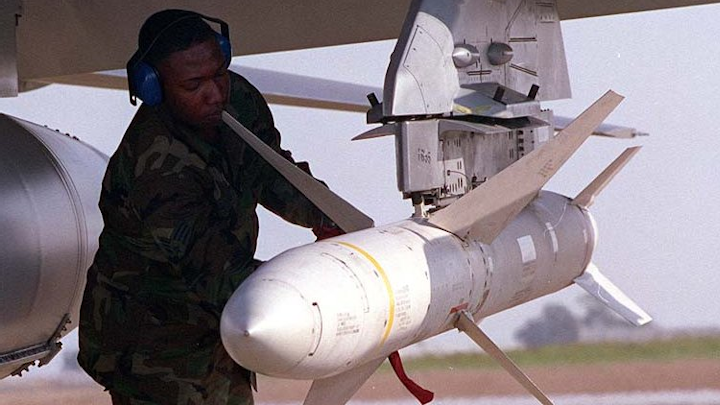Los expertos en armas aéreas de Raytheon Co. actualizarán y restaurarán alrededor de 1.000 misiles anti radar de alta velocidad AGM-88B (HARM) para los aliados de EE. UU. En virtud de un contrato de $ 355.5 millones, para Qatar, Taiwán y Bahrein. Se le agregará un receptor GPS y una unidad de medición inercial (IMU) mejorada para una navegación precisa en el misil.
 ROBINS AIR FORCE BASE, Ga. – Aerial weapons experts at the Raytheon Co. will upgrade and refurbish about 1,000 radar-killing AGM-88B High Speed Anti-Radiation Missiles (HARMs) for U.S. allies under terms of a $355.5 million contract announced last Thursday.
ROBINS AIR FORCE BASE, Ga. – Aerial weapons experts at the Raytheon Co. will upgrade and refurbish about 1,000 radar-killing AGM-88B High Speed Anti-Radiation Missiles (HARMs) for U.S. allies under terms of a $355.5 million contract announced last Thursday.
Officials of the U.S. Air Force Life Cycle Management Center at Robins Air Force Base, Ga., are asking the Raytheon Missile Systems segment in Tucson, Ariz., to provide HARM Control Section Modification (HCSM) work for legacy AGM-88B missiles for electronic warfare (EW) and electronic attack missions. This contract is for Qatar, Taiwan, and Bahrain.
The HCSM adds a GPS receiver and an improved inertial measurement unit (IMU) for precision navigation on the missile. The upgrade features a digital flight computer that merges targeting solutions from navigation and seeker systems to improve the missile’s probability of hit, while controlling where the missile can and cannot fly, Raytheon officials say.
This contract provides for the refurbishment of live AGM-88Bs and conversion of AGM-88B into Captive Air Training Missiles (CATM-88B) for approved Foreign Military Sales countries. The CATM-88Bs are training missiles that simulate live HARM missiles for training purposes.
The AGM-88 HARM missile is for all variants of the F/A-18, Tornado, EA-18G, F-16, EA-6B, and F-35 (external) combat jets. It features an advanced, digital, anti-radiation homing sensor, millimeter wave radar terminal seeker, and GPS/INS guidance.
The missile provides the ability to engage and destroy enemy air defenses and time-critical, mobile targets. It can detect, attack, and destroy a radar antenna or transmitter with minimal aircrew input. It has a fixed antenna and seeker head in the missile’s nose.
A solid-propellant rocket motor propels the missile at speeds faster than Mach 2.0. The HARM missile project was led by the U.S. Navy, and first was first carried by the A-6E, A-7, F/A-18A/B, and EA-6B aircraft. The U.S. Air Force (USAF) put the HARM onto the F-4G Wild Weasel aircraft, and later on specialized F-16s.

